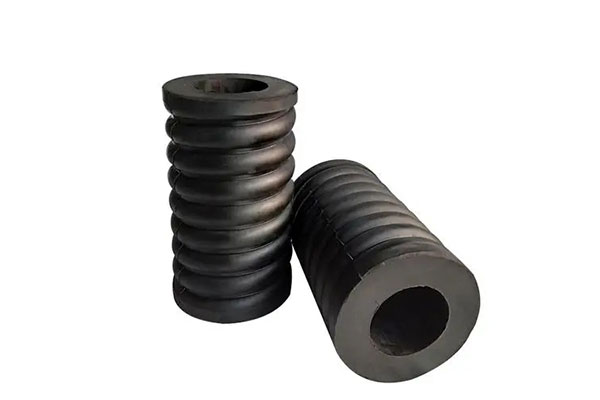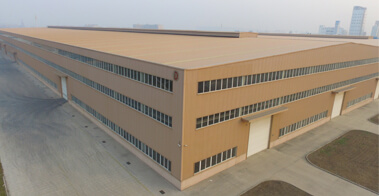Steel wire compression spring: The materials used are mostly circular in cross-section, and there are also rectangular and multi-strand steel wire wound springs. The springs are generally of equal pitch. The shapes of compression springs include cylindrical, conical, centrally convex, centrally concave, and a small number of non-circular shapes, etc. There is a certain gap between the coils of the compression spring. When subjected to external loads, the spring contracts and deforms, storing deformation energy.
-
The spring is made of carbon steel/manganese steel material, with the characteristics of fatigue resistance and good toughness.
-
The spring undergoes surface strengthening treatment, which makes the surface structure strong, enhances the strength of stress concentration, and prolongs the service life of the spring. (3) After more than 3 times of strong pressure treatment, the internal stress before use is eliminated, avoiding deformation, shortening, fracture, and other phenomena of the spring.
Rubber spring: It is a highly elastic material, and the manufacturing material includes ordinary rubber. The rubber spring has a small elastic modulus, undergoes significant elastic deformation when loaded, absorbing impact and vibration. It can withstand multi-directional loads simultaneously, but its high-temperature resistance and oil resistance are inferior to steel springs. If there are special requirements, oil-resistant rubber can be used.
-
The shape is not restricted, and the stiffness in each direction can be freely chosen according to design requirements.
-
Although the elastic modulus is small, it can achieve significant elastic deformation, making it easy to achieve ideal nonlinear characteristics.
-
It has a higher internal resistance, which has a good effect on absorbing sudden impacts, high-frequency vibrations, and sound insulation.
-
The same rubber spring can simultaneously bear multi-directional loads, simplifying the structure of the system.
Compound spring is an elastic body formed by combining metal coil spring and rubber. It combines the advantages of metal spring and rubber spring while overcoming their disadvantages. The shape and mechanical properties are stable, capable of bearing loads and large deformations. It has good vibration isolation and noise reduction effects, and comes with advantages such as smooth operation and a short resonance zone time.
-
Simple structure, large load, non-linear, small space, large damping, full-frequency spectrum shock absorption.
-
Retains the advantages of metal springs and rubber springs while overcoming their shortcomings, making it a replacement and upgrade product for them.
The shear-type rubber spring, also known as the steel plate interlayer rubber shock absorber, is used for high-frequency vibrating equipment, such as hydraulic cone crushers and linear screens. In linear vibrating screens, the screen machine is driven by a vibrator to produce certain amplitude vibrations at a high frequency. This can easily cause resonance in the support structure, and the support springs are prone to damage. In such cases, shear springs are used to connect the screen box and the base.
-
Rubber has high elasticity and viscoelasticity.
-
Compared to steel, rubber has a large elastic deformation and a small elastic modulus.
-
Rubber has a greater impact stiffness than dynamic stiffness, and dynamic stiffness is greater than static stiffness, which helps reduce impact deformation and dynamic deformation.
-
The stress-strain curve is an elliptical hysteresis loop, and its area equals the vibrational energy (damping) converted into heat for each vibration cycle. This can be adjusted through formula design.
-
Rubber is an incompressible material (Poisson's ratio is 0.5).
-
The shape of the rubber can be freely chosen, and the hardness can be adjusted through formula design to meet the requirements for stiffness and strength in different directions.







